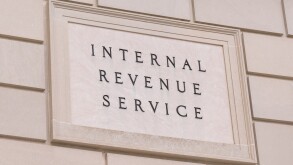
|

|

|
Rakesh Dharawat |
Hari Gangadharan |
Niraj Bagri |
The central government took its fight against the elimination of unaccounted money to a whole new level on the evening of November 8 2016 with its sudden announcement to demonetise the high value currency notes of INR 500 and INR 1,000.
While demonetisation has taken place before in India – in 1946 and 1978 – the scale of this initiative is unprecedented. With almost INR 14 million ($205,000) worth of INR 500 and INR 1,000 notes in circulation, this is so far probably the single biggest effort to root out black money and to curb fake currency and corruption.
The Ministry of Finance has also introduced the Taxation Laws (Second Amendment) Bill, 2016 to amend the provision of income-tax laws and provide for the tax treatment of undisclosed income.
The proposals contained in the bill provide an opportunity for taxpayers to declare their undisclosed income either by:
Making a declaration under a new limited window scheme by paying tax, surcharge and penalty at almost 50% and block at least 25% of undisclosed income in an interest-free deposit for four years (with immunity from certain other laws); or
Paying tax, surcharge and excess at 77.25% (but without immunity from certain other laws). Additionally, the taxpayers can face a penalty of 10%, as well as other adverse consequences under the law like interest, prosecution, etc.
A deadline of December 30 2016 has been set to deposit or exchange the old currency notes with banks for the newly designed INR 500 and INR 2000 notes. Although the discretionary spending by taxpayers in cash is likely to be impacted, this move has, overall, been applauded at a nationwide level.
Goods and services tax – rapid strides taken towards the new indirect tax regime
Separately, after receiving the unanimous approval of parliament and subsequent ratification by the requisite number of states, India is poised to introduce the goods and services tax (GST) regime in the next fiscal year, which commences on April 1 2017.
Several rounds of consultations have taken place between the members of the GST council, a body which has representation from all the legislative stakeholders. Consensus has been reached to have a multiple tax rate structure for goods which is shown in Table 1.
Table 1 |
|
Tax Rates |
Categories of goods |
0% |
Essential commodities |
5% |
Mass consumption goods |
12% |
Standard rate |
18% |
|
28% |
Consumer durables, luxury goods and demerit goods like aerated beverages, etc. |
While the above tax rate structure may not be ideal, it is more pragmatic because it is acceptable to all stakeholders. Also, the classification of goods in the above tax rate structure is underway and will be announced shortly.
The question of which authority would be responsible to monitor compliance by companies, whether it be the federal or the state or both, is still eluding consensus. The same is expected to be resolved in the next round of meetings.
It is also expected that the final draft of the GST law (likely to be on the lines of the Model Law) would be released in the public domain very soon. This will help companies finalise the impact of GST on their operations and update their information technology systems accordingly. There is a very short window left for companies to ensure that their operations and systems are geared up and compliant from a GST perspective, if they have not yet undertaken steps to implement the transition to GST.
Supreme Court decision on the validity of entry tax laws
The taxation structure in India consists of tax being levied by both the federal and state governments. Most of the state governments had enacted laws to levy an entry tax for specified goods entering the state for sale, use or consumption, but the same had been challenged by companies on several grounds. The key argument was that the enacted laws violate provisions in the Constitution of India and are therefore invalid. The invalidity of these laws was upheld by several high courts and therefore, the matter in the case of Jindal Stainless Ltd Vs State of Haryana had been taken up for consideration by a nine-member Constitution bench in the Supreme Court.
In a landmark ruling, the Supreme Court, by way of a majority, held that the enacted entry tax laws do not suffer from constitutional infirmity and are thus valid.
This ruling could significantly impact several companies as it may lead payments of past liabilities.
Rakesh Dharawat (rakesh.dharawat@dhruvaadvisors.com), Hari Gangadharan (hariharan.gangadharan@dhruvaadvisors.com) and Niraj Bagri (niraj.bagri@dhruvaadvisors.com)
Dhruva Advisors
Tel: +91 22 6108 1000
Website: www.dhruvaadvisors.com














